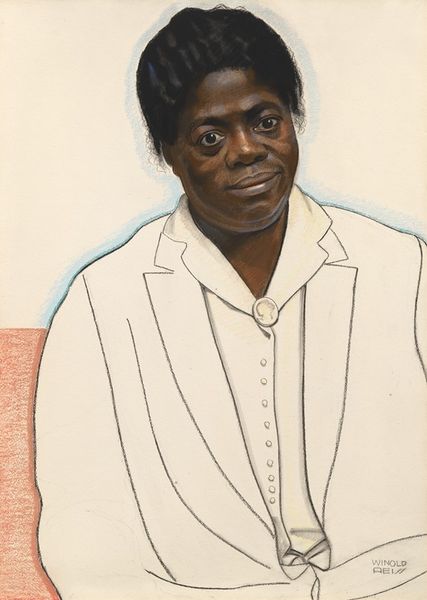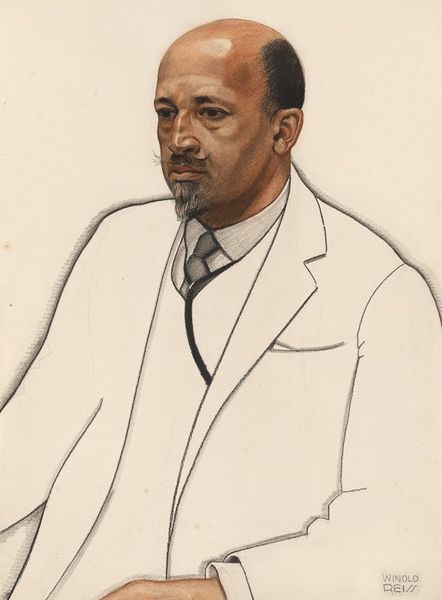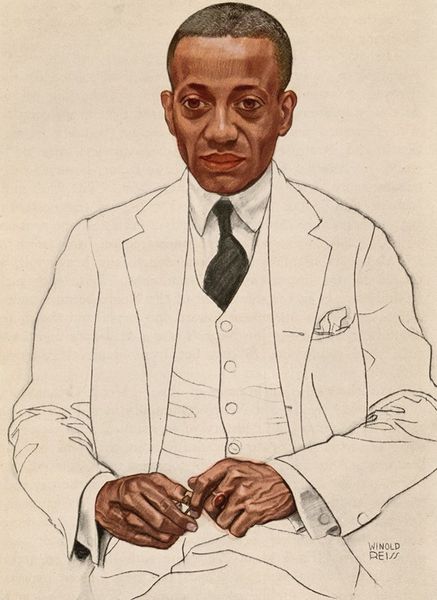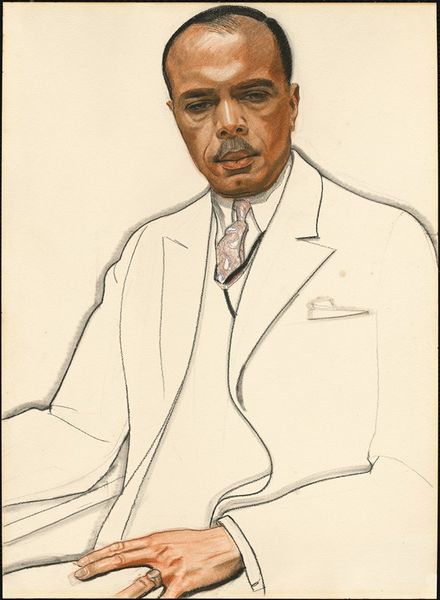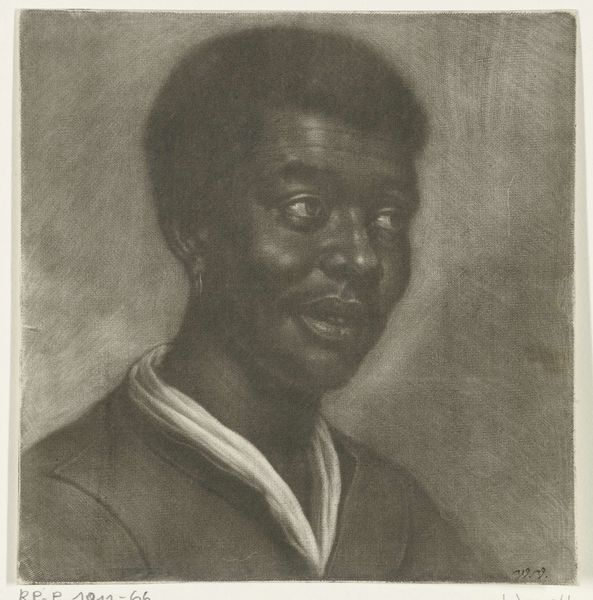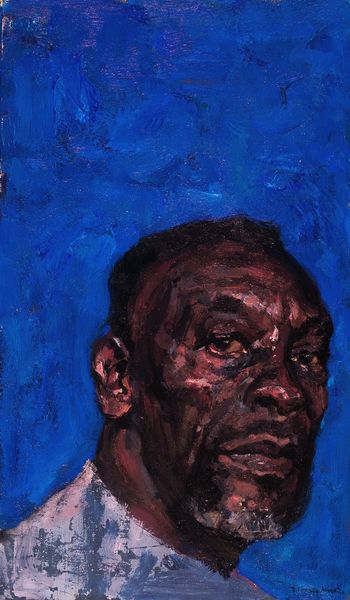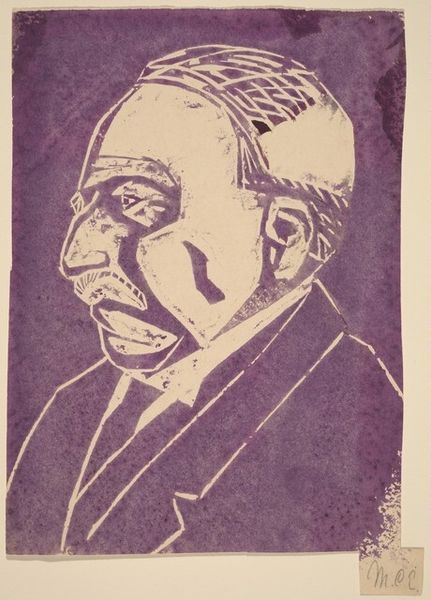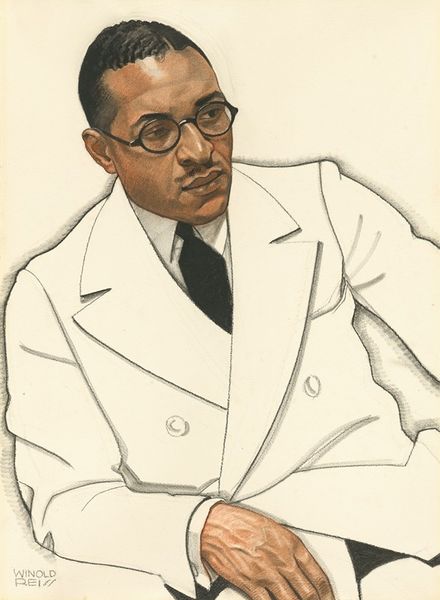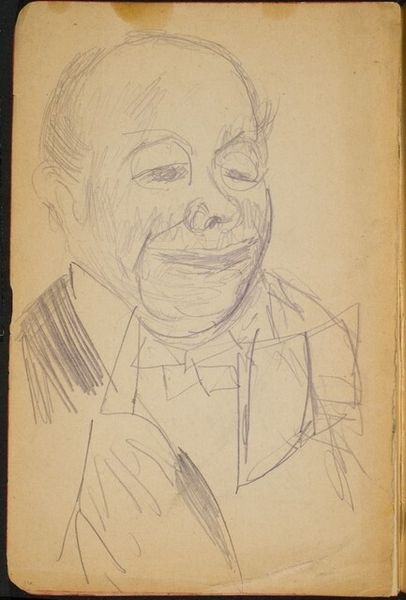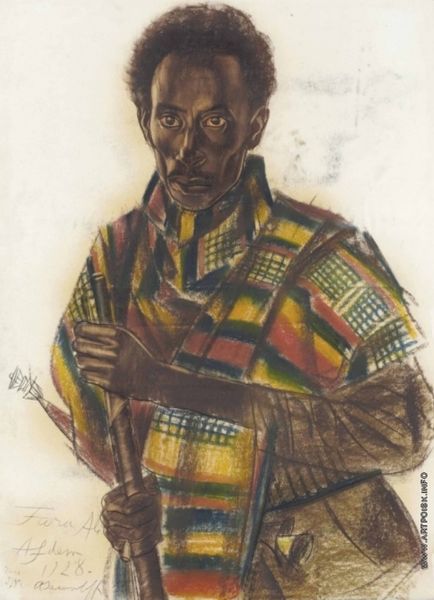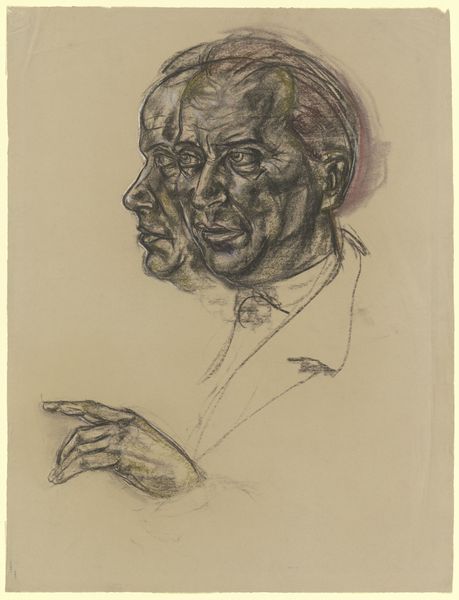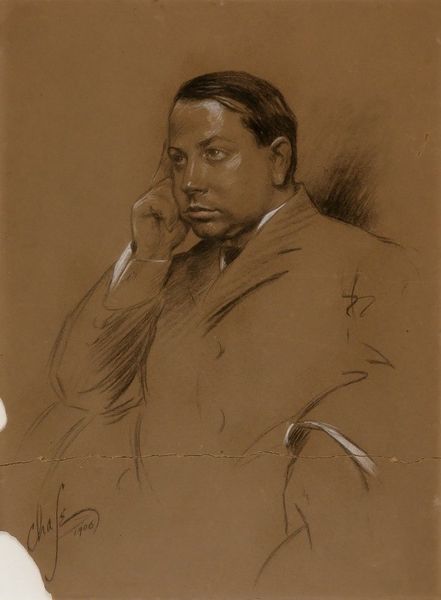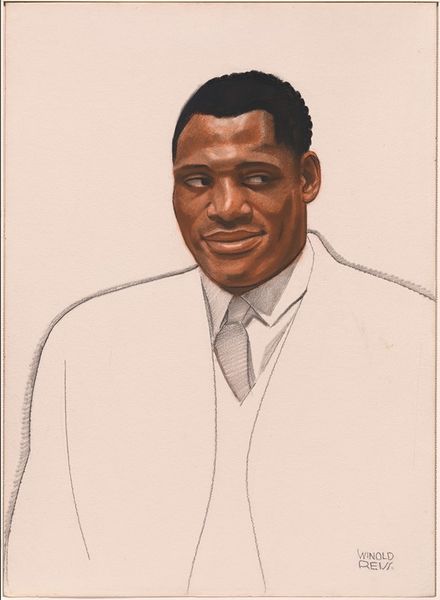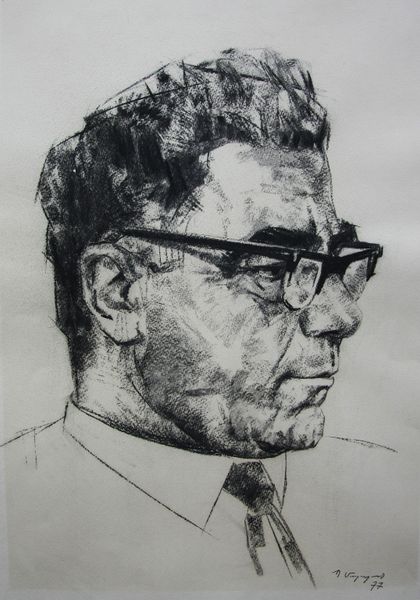
drawing, pencil
#
portrait
#
drawing
#
figurative
#
harlem-renaissance
#
pencil
#
portrait drawing
#
portrait art
#
realism
Copyright: Public Domain: Artvee
Curator: This portrait, simply titled "Robert Russa Moton," was created in 1925 by Winold Reiss. Reiss was a German-American artist who became deeply involved in documenting African American life during the Harlem Renaissance. Editor: It strikes me immediately with its incompleteness, or rather, its selective completion. The head and hand are rendered in detail with pencil, but the clothing is just sketched in outline. It feels like labor suspended or interrupted. Curator: That incompleteness is really interesting, especially given the context. Robert Russa Moton succeeded Booker T. Washington as president of Tuskegee Institute. Reiss's portraits were part of a larger movement aiming to elevate Black figures in American society, to put their likenesses into prominent display. Editor: It makes you think about the work involved, not just in the art, but in Moton's life and achievements. What did it mean to portray a leader, knowing all the structures working against him, his school, and the labor invested. Curator: Absolutely. Reiss was commissioned by Alain Locke to produce portraits for "The New Negro," a landmark anthology of African American art and literature, placing Black intellectuals, artists, and leaders into the visual culture. This portrait captures Moton's intellect; the hand on the chin implies contemplation, decision-making. Editor: And the visible pencil strokes really emphasize the artistic labor too, and that's important to remember in that moment of social elevation of certain black intellectuals – who does the actual work and how is their effort visualized, literally made visible. It highlights the material conditions of representation. Curator: The lack of adornment is striking, though. This isn’t about pomp and circumstance; it’s a direct and earnest depiction intended to convey dignity and strength, moving away from stereotypical and caricature-like imagery that was so common. Editor: Yes, and I appreciate the contrast – the heavy, dark rendering of skin tone, achieved by clearly a focused application of material. And just outline elsewhere. I’m compelled to think about artistic choices as material and political choices. Curator: Reflecting on the historical impact and social conditions helps you see how art enters a dialog in the struggle for equality and human dignity. Editor: Right, and thinking about the medium, the choices in deploying it and who is actually moving that pencil across the page. All of that is present in the image, if we really choose to see it.
Comments
No comments
Be the first to comment and join the conversation on the ultimate creative platform.
